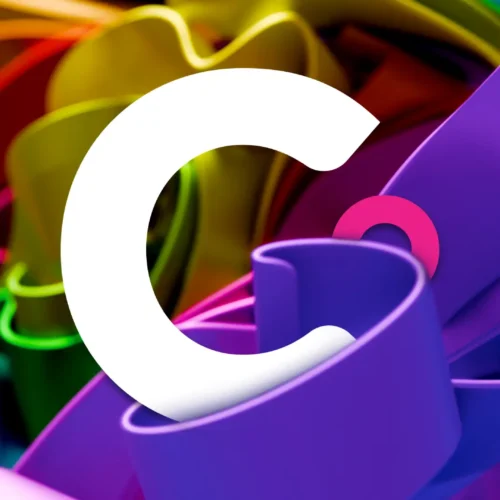From ranking search results, selling ads, and providing tools to analyze user behavior, Google is the gatekeeper between customers and your website. Now, after years of speculation, the search engine giant has introduced another critical dependency for your company to navigate: Mobile first indexing.
First explored by Google in late 2016 as a reflection of internet habits shifting toward our hand-held devices, mobile first indexing has been an ongoing topic in the SEO community. As the mobile audience grew, so did Google’s interest in accommodating user behavior by placing the mobile versions of every site as the first priority for its algorithm.
Last year, the company announced that mobile first indexing would be enabled by default for every new website. This September, after the company said 70% of all websites in its search were crawled with a preference for mobile experiences, mobile first indexing has become standard practice for every site. Consequently, your organization’s mobile presence – and its optimization – are more important than ever.
PERCENTAGE OF ALL WEBSITES IN GOOGLE’S INDEX
CRAWLED FOR MOBILE PREFERENCE

For website managers, Google’s transition to mobile first indexing has been a long time coming. Most companies already manage and maintain desktop and mobile versions of their sites to provide a satisfying experience on both platforms. But accommodating the mobile audience doesn’t mean your website is optimized to rank highly in results pages. With Google’s shift toward prioritizing the mobile audience, your design and development strategy must also change to keep pace.
What Does Mobile First Indexing Mean for Your Website?
Google’s emphasis on the mobile experience in its search results has been an ongoing effort. But this shift can be confusing without the proper context.
Put simply, mobile first indexing establishes the mobile version of your website as the first priority for how Google crawls your site to index your content. Google has clarified the shift does not constitute a separate indexing effort – it’s “mobile first,” not “mobile only.” But just as website managers could not force a shift to mobile first indexing prior to its full rollout in 2020, you also can’t opt-out.
How the Absence of a Mobile Friendly Website Impacts Search Rankings
If your B2B website design doesn’t accommodate mobile users, its desktop version will still be included in Google’s index. However, a website’s mobile friendliness, a label Google has used to favor sites that display properly for mobile users, is a contributing factor in your search rankings.
If your competitors offer a mobile experience, their websites will appear higher to your potential customers on a mobile browser. Even if these users are using the desktop platform, your site may still appear lower in results pages because Google perceives it as offering a poor user experience.
Consider Google’s mobile first indexing as confirmation of which platform it considers most valuable to users. If your website uses a responsive design that adjusts for the differing screen sizes of every mobile device, then mobile first indexing may not impact your rankings. But even if your company’s mobile site offers an accurate reproduction of the desktop experience, you must ensure its content is just as effective.
But even if your company’s mobile site offers an accurate reproduction of the desktop experience, you must ensure its content is just as effective.
Mobile First Indexing Requires Optimized Website Content and Code
If your B2B website uses a responsive design and already appears high in search results, mobile first indexing may not constitute a major change for your business. However, you should audit your site’s mobile performance to ensure it loads quickly and delivers a strong user experience.
If your company continues to maintain separate sites for each platform, the mobile version can no longer be considered an afterthought. To accommodate mobile first index, both sites must deliver offer the same substance and effectiveness.

MOBILE FIRST DEMANDS A CONTENT-FIRST APPROACH ACROSS PLATFORMS
With Google focusing on your mobile site for indexing, the same amount of content should be found on both versions. Use a visual hierarchy in your design to set content priorities and accommodate the limited display space on mobile screens. Your design should also reflect the different screen orientations from desktop to mobile, which shifts from horizontal to vertical.
Mobile users also prefer text that’s easy to browse. Large blocks of text should be broken into short paragraphs, and expandable menus will allow users more flexibility on a limited screen size while remaining searchable. Pop-ups also lead to a frustrating experience on mobile sites, as do small buttons that are difficult to navigate with a finger.
Your website content also includes images and videos, which should also remain high quality, optimized for mobile, and searchable. Headings and display text should also be the same on both sites. If your organization ignores these considerations and chooses to offer less content on its mobile site, your search rankings will likely drop.
MOBILE FIRST DEMANDS CONTENT-FIRST APPROACH

CONSISTENT CODING WILL KEEP YOUR MOBILE SITE ACCESSIBLE TO GOOGLE
Much like the mobile and desktop versions of your B2B website should share identical content, much of the coding should also remain consistent.
Using the same meta tags on both sites will allow Google to index both versions of your site, and your developers should also ensure content that requires user interaction is also indexable. If your site uses structured data, it should also be present on both versions along with consistent metadata. Shorter character counts in metadata is fine, but the same information should be included. Google also offers a full list of mobile first indexing best practices for developers that offer further coding guidelines.
Your Business Should Follow Google’s Mobile First Approach – or Else
Given the vital role Google plays in connecting businesses with their customers, your organization faces a simple choice in adapting to its new, mobile first index. Follow the search engine’s lead in reflecting user behavior or find another way for customers to find you.
For businesses that have already migrated to a responsive design approach, the impact of Google’s shift in emphasis is minimal. With a flexible website design that accommodates every platform, the mobile audience is no longer a separate consideration.
However, if your business still manages two distinct experiences, Google has offered a clear indication of its priority – and yours. Fortunately, both you and the search engine share an interest in listening to your users and adapting accordingly. What organization wouldn’t follow their lead?






